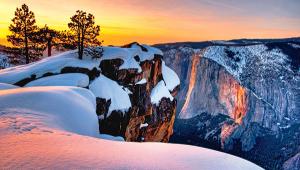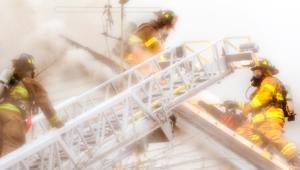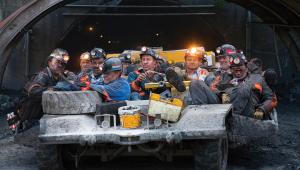Personal Project: Time And Again

All Photos © Michael Crouser

But there was something else about the photo, which depicts a woman selling books and prints at an outdoor market stall on the Seine—something more immediate: “I noticed that it didn’t give any hint of the era in which it was shot,” Michael says. “It didn’t suggest popular culture, there was no typography in it, no current fashion. I found that fascinating because it wasn’t something I had consciously sought at that point. I just shot the picture and moved on.”
Four years later Michael shot a picture in Madrid that reinforced that idea and led to what he calls “a fascination with a timeless aesthetic. I’ve come to call it sin tiempo, without time.” The Spanish phrase, he says, “suggests moments, vignettes, faces that give no evidence of their provenance, their era, their moment in time.”


He realized that such moments happen all the time. “Sometimes they are fleeting seconds, sometimes they are stately street corners, and sometimes they are a combination of elements.”
Capturing those moments, those scenes, has become an ongoing project. “There’s a trend over the last 10 or 15 years to photograph the hell out of popular culture, either in a celebratory or an ironic way,” Michael says. “Neither of those appeal to me; there’s not a statement there that I feel like making. When I take pictures that make me happy, they’re generally images that don’t reflect popular culture in any way. They are images that notice something more simple, more beautiful.”


There are times he’ll have to reject a scene because of its modern touches—power lines, billboards, light poles, though sometimes he can rearrange the composition or change his position. “A lot of times I’ll set up a composition ahead of time and wait an hour or more for the right person to come into the picture. That’s a preferable method for getting something really precious—just block it out and wait for something to happen. I can’t be in a hurry; I have to have patience.”
Michael does all his own processing of the Tri-X film he shoots, toning each image with Kodak Professional Brown Toner. Michael will scan his prints only when digital files are required for web use or, as in this case, for magazine reproduction. All of the photographs here were made with a Pentax 67 fitted with a 200mm lens, save the image from Paris, which was taken with a Canon AE-1 and a 135mm lens. “I shoot most often these days with the Pentax,” Michael says, “and when I travel I bring only the 200mm lens—it just fits so well with how I see. When I look at a scene I already know how it’s going to look in my 200mm.”


In the sin tiempo images are the unmistakable echoes of the artists Michael calls “the Mt. Rushmore of French photographers: Brassai, Doisneau, Lartigue, and Cartier-Bresson, with maybe a little Atget thrown in. I relate to their presentation, their humor, their composition, their subject choices.
The very first monograph I owned was a gift of Doisneau’s Three Seconds From Eternity. It’s hard to know if it had a great influence on me photographically, or if I just realized that here was a visual kindred spirit.”
You can see that spirit in the photograph of the woman on the Seine. “That was a really important moment,” Michael says. “It was the first time I’d photographed such an aesthetic, and it’s a moment that’s stayed with me.
“I’m not trying to make old-fashioned photographs, I’m simply trying to make pictures that fit a certain aesthetic, and that’s an important distinction.”
The photos shown here will be part of a retrospective of Michael’s work to be featured at the Leica Gallery in New York City from January 13th-February 25th. Visit his website www.michaelcrouser.com, to view a selection of his commercial, editorial, and fine art images.
- Log in or register to post comments











































